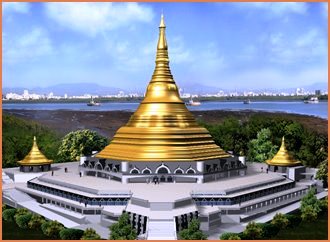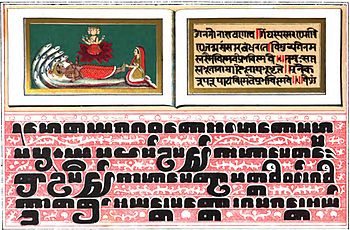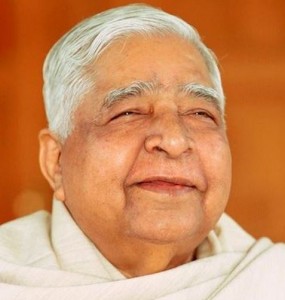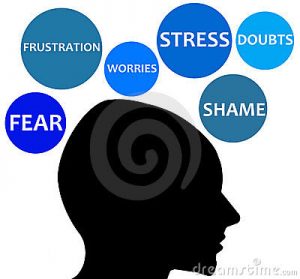 Vipassana is a Pali language word; it means to see things as they really are. Pali is a middle Indo-Aryan language. Gautam Buddha initiated Vipassana meditation 2500 years ago. This is a non-sectarian technique. It is a easy technique of watching your breathing – the inhaling and exhaling, watching it coming and going. As you watch your own breathing silently, without doing anything else, with full concentration just on your breathing you start monitoring your thoughts. How often do most people pay attention to this function that occurs each and every second of our lives; there is nothing more elementary than breathing which is often overlooked in life. Every breath has its essence. While observing your breathing, slowly it makes you aware of your presence; it puts you in the ‘present.’ Your wavering mind stops in the present, at this point, and now. Your mind gets settled into the current moment. When you focus on your breathing you are in the present. Till such time you focus on breathing; it might be for 10 minutes/15 minutes as short as that, you are not in what may happen next, tomorrow, next week, next year, or any memory of past. Everything is related to now. And what are you doing now? You are simply breathing in and out.
Vipassana is a Pali language word; it means to see things as they really are. Pali is a middle Indo-Aryan language. Gautam Buddha initiated Vipassana meditation 2500 years ago. This is a non-sectarian technique. It is a easy technique of watching your breathing – the inhaling and exhaling, watching it coming and going. As you watch your own breathing silently, without doing anything else, with full concentration just on your breathing you start monitoring your thoughts. How often do most people pay attention to this function that occurs each and every second of our lives; there is nothing more elementary than breathing which is often overlooked in life. Every breath has its essence. While observing your breathing, slowly it makes you aware of your presence; it puts you in the ‘present.’ Your wavering mind stops in the present, at this point, and now. Your mind gets settled into the current moment. When you focus on your breathing you are in the present. Till such time you focus on breathing; it might be for 10 minutes/15 minutes as short as that, you are not in what may happen next, tomorrow, next week, next year, or any memory of past. Everything is related to now. And what are you doing now? You are simply breathing in and out.
 When we pay attention to the act of breathing, our body responds. When you take these deep thoughtful breaths in and out, a relaxed and calm state settles in. As you stay in this state of relaxed awareness, you will notice a natural process of “release” starting to happen. This release slowly starts detoxing (purifying) your energy. It might take a while of getting started the process. The concentrated breathing process starts reaching layers, releasing tensions, stress, aggravation, depression, and gloom depending on how much accumulation is present in your body. The process helps in re-centering our awareness in the principle of pure consciousness which is important for our vital being. We need to remember that each body is unique and reacts differently to this detox process, no two people can have same experience. Therefore, don’t go in for comparison of your experience with somebody else’s.
When we pay attention to the act of breathing, our body responds. When you take these deep thoughtful breaths in and out, a relaxed and calm state settles in. As you stay in this state of relaxed awareness, you will notice a natural process of “release” starting to happen. This release slowly starts detoxing (purifying) your energy. It might take a while of getting started the process. The concentrated breathing process starts reaching layers, releasing tensions, stress, aggravation, depression, and gloom depending on how much accumulation is present in your body. The process helps in re-centering our awareness in the principle of pure consciousness which is important for our vital being. We need to remember that each body is unique and reacts differently to this detox process, no two people can have same experience. Therefore, don’t go in for comparison of your experience with somebody else’s.
Each person has a different load of accumulated negative energy. The bottom line is that this process causes the body to start moving towards a real harmony, and little bit of repulsiveness in body and mind while practice is just temporary.
 The thoughts come and go. When your mind is relaxed due to the freshness of breathing properly you will see the actuality of your feelings, your opinions, and your approach. The breath and the body are interconnected, as is seen from the fact that the breath is calm when the body is calm. The heavy exhalation is made when feeling exhausted and the enthusiastic inhalation made when feeling energized or exhilarated establishes the same fact. Similarly our breath and the emotions are interconnected, as is seen from the fact that the breath is calm when the emotions are calm, and agitated and awkward when the emotions are troubled or out of control. We draw quick breaths when we are surprised, shocked, or fearful, and the forceful exhalation done when angry or annoyed.
The thoughts come and go. When your mind is relaxed due to the freshness of breathing properly you will see the actuality of your feelings, your opinions, and your approach. The breath and the body are interconnected, as is seen from the fact that the breath is calm when the body is calm. The heavy exhalation is made when feeling exhausted and the enthusiastic inhalation made when feeling energized or exhilarated establishes the same fact. Similarly our breath and the emotions are interconnected, as is seen from the fact that the breath is calm when the emotions are calm, and agitated and awkward when the emotions are troubled or out of control. We draw quick breaths when we are surprised, shocked, or fearful, and the forceful exhalation done when angry or annoyed.
We cannot exist without breathing. In fact breathing is so important that nature has made it automatic in all living being. Nobody has to remember to breath. Just like internal vital process of our body like pumping of heart, circulation of blood, digestion of food etc, the breathing also happens on its own. Vipassana meditation is centered on breathing. Breathing is a link between our body and our soul.
Vipassana practice educates the practitioner relaxed awareness. Just sitting back and allowing watching what arises in the mind. Initially, in order for your awareness to grow, it’s helpful to just watch your mind, and watch your feelings, for a few days/weeks (depending on how strong your awareness already is) as if you are watching a movie. It helps you to detach and purely observe. Once you sense that you’ve become quite aware of your inner space, of thoughts/feelings, it’s time to start letting go of “trying” to be aware and just relax your awareness by just sitting, being relaxed, and allowing what arises to come up. This is not at all complicated, it’s really simple. It allows the mind to open up without any cliché and analysis.
Initially, in order for your awareness to grow, it’s helpful to just watch your mind, and watch your feelings, for a few days/weeks (depending on how strong your awareness already is) as if you are watching a movie. It helps you to detach and purely observe. Once you sense that you’ve become quite aware of your inner space, of thoughts/feelings, it’s time to start letting go of “trying” to be aware and just relax your awareness by just sitting, being relaxed, and allowing what arises to come up. This is not at all complicated, it’s really simple. It allows the mind to open up without any cliché and analysis.
 Shri.Satya Narayan Goenka (30 January 1924 – 29 September 2013) made Vipasanna prominent In India, he is the pioneer of Vipassana meditation in India. Goenka was born in Burma (now Myanmar) to Indian Marwari parents. He grew up in a conservative Hindu sanatani household. He was a successful businessman; but in 1955, at the age of 31, he started experiencing migraine headaches. Unable to find proper relief, at the suggestion of a friend he met with the renowned Vipassana teacher Sayagyi U Ba Khin (1899 – 1971). Initially, Ba Khin was reluctant to accept Goenka as his disciple. After little glitch, he accepted Goenka and trained him for the next 14 years. In 1969, Guru Sayagyi U Ba Khin allowed Goenka to teach Vipasanna to others; this is when he left his business to his family and shifted to India. In 1976, he opened his first meditation centre, The Vipassana International Academy, also known as Dhamma Giri, in Igatpuri near Nashik, Maharashtra. Goenka remained the principal teacher of Vipassana till 1982; he started training meditation teachers 1982 onwards. He also established the Vipassana Research Institute in Igatpuri in 1985. He trained more than 1300 assistant teachers and each year more than 120,000 people attended Goenka-led Vipassana courses.
Shri.Satya Narayan Goenka (30 January 1924 – 29 September 2013) made Vipasanna prominent In India, he is the pioneer of Vipassana meditation in India. Goenka was born in Burma (now Myanmar) to Indian Marwari parents. He grew up in a conservative Hindu sanatani household. He was a successful businessman; but in 1955, at the age of 31, he started experiencing migraine headaches. Unable to find proper relief, at the suggestion of a friend he met with the renowned Vipassana teacher Sayagyi U Ba Khin (1899 – 1971). Initially, Ba Khin was reluctant to accept Goenka as his disciple. After little glitch, he accepted Goenka and trained him for the next 14 years. In 1969, Guru Sayagyi U Ba Khin allowed Goenka to teach Vipasanna to others; this is when he left his business to his family and shifted to India. In 1976, he opened his first meditation centre, The Vipassana International Academy, also known as Dhamma Giri, in Igatpuri near Nashik, Maharashtra. Goenka remained the principal teacher of Vipassana till 1982; he started training meditation teachers 1982 onwards. He also established the Vipassana Research Institute in Igatpuri in 1985. He trained more than 1300 assistant teachers and each year more than 120,000 people attended Goenka-led Vipassana courses.
 This is a 10 days course organized in many cities and nations. Absolute silence is to be observed throughout the program. The course has a daily 7-8 hour meditation schedule and starts with a basic experience of observing one’s own respiration. Second and third day have similar schedules. First three days are meant for your mind to calm down and on fourth day they teach Vipassana which requires a quite, clam and attentive mind. You are expected to attend full 10 days and are not allowed to leave the course in between unless you have some genuine reason. You are served breakfast (6.30-7.15am), lunch (11-11.45am) and evening snacks (5-5.30pm) and no dinner, not even fruits or biscuits. But basically from Day 1, since you are not doing any physical exercise and only meditating, you do not feel hungry. In fact by day 4, you might even start eating less food. The food is delicious very ‘satvik’ in taste. Exceptions are made for people with medical issues.
This is a 10 days course organized in many cities and nations. Absolute silence is to be observed throughout the program. The course has a daily 7-8 hour meditation schedule and starts with a basic experience of observing one’s own respiration. Second and third day have similar schedules. First three days are meant for your mind to calm down and on fourth day they teach Vipassana which requires a quite, clam and attentive mind. You are expected to attend full 10 days and are not allowed to leave the course in between unless you have some genuine reason. You are served breakfast (6.30-7.15am), lunch (11-11.45am) and evening snacks (5-5.30pm) and no dinner, not even fruits or biscuits. But basically from Day 1, since you are not doing any physical exercise and only meditating, you do not feel hungry. In fact by day 4, you might even start eating less food. The food is delicious very ‘satvik’ in taste. Exceptions are made for people with medical issues.
 I experienced many positive changes in my life ever since I completed this 10 days course. In July 1990, I attended 10 days Vipassana course led by Shri Patil at Dhamma Giri, Igatpuri. My life has changed ever since. The regular daily 15 minutes practice has developed my awareness about self and my existence. It has helped me in abandoning false illusions and moving towards the reality. I recommend all readers to make time for this well-structured, free of cost, enlivening course. It will change you in and out.
I experienced many positive changes in my life ever since I completed this 10 days course. In July 1990, I attended 10 days Vipassana course led by Shri Patil at Dhamma Giri, Igatpuri. My life has changed ever since. The regular daily 15 minutes practice has developed my awareness about self and my existence. It has helped me in abandoning false illusions and moving towards the reality. I recommend all readers to make time for this well-structured, free of cost, enlivening course. It will change you in and out.













































